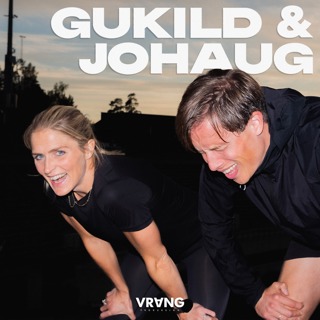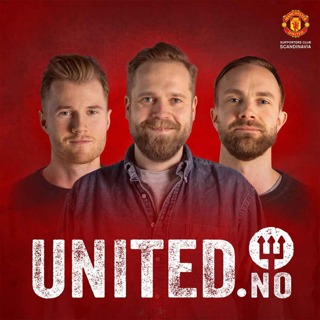
The View From the Israeli Right
On Tuesday I got back from an eight-day trip to Israel and the West Bank. I happened to be there on the day that Benny Gantz resigned from the war cabinet and called on Prime Minister Benjamin Netanyahu to schedule new elections, breaking the unity government that Israel had had since shortly after Oct. 7.There is no viable left wing in Israel right now. There is a coalition that Netanyahu leads stretching from right to far right and a coalition that Gantz leads stretching from center to right. In the early months of the war, Gantz appeared ascendant as support for Netanyahu cratered. But now Netanyahu’s poll numbers are ticking back up.So one thing I did in Israel was deepen my reporting on Israel’s right. And there, Amit Segal’s name kept coming up. He’s one of Israel’s most influential political analysts and the author of “The Story of Israeli Politics” is coming out in English.Segal and I talked about the political differences between Gantz and Netanyahu, the theory of security that’s emerging on the Israeli right, what happened to the Israeli left, the threat from Iran and Hezbollah and how Netanyahu is trying to use President Biden’s criticism to his political advantage.Mentioned:“Biden May Spur Another Netanyahu Comeback” by Amit SegalBook Recommendations:The Years of Lyndon Johnson Series by Robert A. CaroThe World of Yesterday by Stefan ZweigThe Object of Zionism by Zvi EfratThe News from Waterloo by Brian CathcartThoughts? Guest suggestions? Email us at ezrakleinshow@nytimes.com.You can find transcripts (posted midday) and more episodes of “The Ezra Klein Show” at nytimes.com/ezra-klein-podcast. Book recommendations from all our guests are listed at https://www.nytimes.com/article/ezra-klein-show-book-recs.This episode of “The Ezra Klein Show” was produced by Claire Gordon. Fact-checking by Michelle Harris with Kate Sinclair. Our senior engineer is Jeff Geld, with additional mixing by Aman Sahota. Our senior editor is Claire Gordon. The show’s production team also includes Annie Galvin, Rollin Hu, Elias Isquith and Kristin Lin. Original music by Isaac Jones. Audience strategy by Kristina Samulewski and Shannon Busta. The executive producer of New York Times Opinion Audio is Annie-Rose Strasser. And special thanks to Sonia Herrero. Subscribe today at nytimes.com/podcasts or on Apple Podcasts and Spotify. You can also subscribe via your favorite podcast app here https://www.nytimes.com/activate-access/audio?source=podcatcher. For more podcasts and narrated articles, download The New York Times app at nytimes.com/app.
14 Jun 202455min

The Economic Theory That Explains Why Americans Are So Mad
There’s something weird happening with the economy. On a personal level, most Americans say they’re doing pretty well right now. And according to the data, that’s true. Wages have gone up faster than inflation. Unemployment is low, the stock market is generally up so far this year, and people are buying more stuff.And yet in surveys, people keep saying the economy is bad. A recent Harris poll for The Guardian found that around half of Americans think the S. & P. 500 is down this year, and that unemployment is at a 50-year high. Fifty-six percent think we’re in a recession.There are many theories about why this gap exists. Maybe political polarization is warping how people see the economy or it’s a failure of President Biden’s messaging, or there’s just something uniquely painful about inflation. And while there’s truth in all of these, it felt like a piece of the story was missing.And for me, that missing piece was an article I read right before the pandemic. An Atlantic story from February 2020 called “The Great Affordability Crisis Breaking America.” It described how some of Americans’ biggest-ticket expenses — housing, health care, higher education and child care — which were already pricey, had been getting steadily pricier for decades.At the time, prices weren’t the big topic in the economy; the focus was more on jobs and wages. So it was easier for this trend to slip notice, like a frog boiling in water, quietly, putting more and more strain on American budgets. But today, after years of high inflation, prices are the biggest topic in the economy. And I think that explains the anger people feel: They’re noticing the price of things all the time, and getting hammered with the reality of how expensive these things have become.The author of that Atlantic piece is Annie Lowrey. She’s an economics reporter, the author of Give People Money, and also my wife. In this conversation, we discuss how the affordability crisis has collided with our post-pandemic inflationary world, the forces that shape our economic perceptions, why people keep spending as if prices aren’t a strain and what this might mean for the presidential election.Mentioned:“It Will Never Be a Good Time to Buy a House” by Annie LowreyBook Recommendations:Franchise by Marcia ChatelainA Place of Greater Safety by Hilary MantelNickel and Dimed by Barbara EhrenreichThoughts? Guest suggestions? Email us at ezrakleinshow@nytimes.com.You can find transcripts (posted midday) and more episodes of “The Ezra Klein Show” at nytimes.com/ezra-klein-podcast. Book recommendations from all our guests are listed at https://www.nytimes.com/article/ezra-klein-show-book-recs.This episode of “The Ezra Klein Show” was produced by Rollin Hu. Fact-checking by Michelle Harris. Our senior engineer is Jeff Geld, with additional mixing by Efim Shapiro and Aman Sahota. Our senior editor is Claire Gordon. The show’s production team also includes Annie Galvin, Elias Isquith and Kristin Lin. Original music by Isaac Jones and Aman Sahota. Audience strategy by Kristina Samulewski and Shannon Busta. The executive producer of New York Times Opinion Audio is Annie-Rose Strasser. Special thanks to Sonia Herrero. Subscribe today at nytimes.com/podcasts or on Apple Podcasts and Spotify. You can also subscribe via your favorite podcast app here https://www.nytimes.com/activate-access/audio?source=podcatcher. For more podcasts and narrated articles, download The New York Times app at nytimes.com/app.
7 Jun 20241h 31min

The Republican Party’s Decay Began Long Before Trump
After Donald Trump was convicted last week in his hush-money trial, Republican leaders wasted no time in rallying behind him. There was no chance the Republican Party was going to replace Trump as their nominee at this point. Trump has essentially taken over the G.O.P.; his daughter-in-law is even co-chair of the Republican National Committee.How did the Republican Party get so weak that it could fall victim to a hostile takeover?Daniel Schlozman and Sam Rosenfeld are the authors of “The Hollow Parties: The Many Pasts and Disordered Present of American Party Politics,” which traces how both major political parties have been “hollowed out” over the decades, transforming once-powerful gatekeeping institutions into mere vessels for the ideologies of specific candidates. And they argue that this change has been perilous for our democracy.In this conversation, we discuss how the power of the parties has been gradually chipped away; why the Republican Party became less ideological and more geared around conflict; the merits of a stronger party system; and more.Mentioned:“Democrats Have a Better Option Than Biden” by The Ezra Klein Show“Here’s How an Open Democratic Convention Would Work” by The Ezra Klein Show with Elaine KamarckBook Recommendations:The Two Faces of American Freedom by Aziz RanaRainbow’s End by Steven P. ErieAn American Melodrama by Lewis Chester, Godfrey Hodgson, Bruce PageThoughts? Guest suggestions? Email us at ezrakleinshow@nytimes.com.You can find transcripts (posted midday) and more episodes of “The Ezra Klein Show” at nytimes.com/ezra-klein-podcast. Book recommendations from all our guests are listed at https://www.nytimes.com/article/ezra-klein-show-book-recs.This episode of “The Ezra Klein Show’‘ was produced by Elias Isquith. Fact-checking by Michelle Harris, with Mary Marge Locker, Kate Sinclair and Rollin Hu. Our senior engineer is Jeff Geld, with additional mixing by Aman Sahota and Efim Shapiro. Our senior editor is Claire Gordon. The show’s production team also includes Annie Galvin and Kristin Lin. Original music by Isaac Jones. Audience strategy by Kristina Samulewski and Shannon Busta. The executive producer of New York Times Opinion Audio is Annie-Rose Strasser. Special thanks to Sonia Herrero. Subscribe today at nytimes.com/podcasts or on Apple Podcasts and Spotify. You can also subscribe via your favorite podcast app here https://www.nytimes.com/activate-access/audio?source=podcatcher. For more podcasts and narrated articles, download The New York Times app at nytimes.com/app.
4 Jun 20241h 6min

Your Mind Is Being Fracked
The steady dings of notifications. The 40 tabs that greet you when you open your computer in the morning. The hundreds of unread emails, most of them spam, with subject lines pleading or screaming for you to click. Our attention is under assault these days, and most of us are familiar with the feeling that gives us — fractured, irritated, overwhelmed.D. Graham Burnett calls the attention economy an example of “human fracking”: With our attention in shorter and shorter supply, companies are going to even greater lengths to extract this precious resource from us. And he argues that it’s now reached a point that calls for a kind of revolution. “This is creating conditions that are at odds with human flourishing. We know this,” he tells me. “And we need to mount new forms of resistance.”Burnett is a professor of the history of science at Princeton University and is working on a book about the laboratory study of attention. He’s also a co-founder of the Strother School of Radical Attention, which is a kind of grass roots, artistic effort to create a curriculum for studying attention.In this conversation, we talk about how the 20th-century study of attention laid the groundwork for today’s attention economy, the connection between changing ideas of attention and changing ideas of the self, how we even define attention (this episode is worth listening to for Burnett’s collection of beautiful metaphors alone), whether the concern over our shrinking attention spans is simply a moral panic, what it means to teach attention and more.Mentioned:Friends of Attention“The Battle for Attention” by Nathan Heller“Powerful Forces Are Fracking Our Attention. We Can Fight Back.” by D. Graham Burnett, Alyssa Loh and Peter SchmidtScenes of Attention edited by D. Graham Burnett and Justin E. H. SmithBook Recommendations:Addiction by Design by Natasha Dow SchüllObjectivity by Lorraine Daston and Peter L. GalisonThe Confidence-Man by Herman MelvilleThoughts? Guest suggestions? Email us at ezrakleinshow@nytimes.com.You can find transcripts (posted midday) and more episodes of “The Ezra Klein Show” at nytimes.com/ezra-klein-podcast. Book recommendations from all our guests are listed at https://www.nytimes.com/article/ezra-klein-show-book-recs.This episode of “The Ezra Klein Show” was produced by Rollin Hu and Kristin Lin. Fact-checking by Michelle Harris, with Mary Marge Locker and Kate Sinclair. Our senior engineer is Jeff Geld, with additional mixing by Isaac Jones and Aman Sahota. Our senior editor is Claire Gordon. The show’s production team also includes Annie Galvin and Elias Isquith. Original music by Isaac Jones and Aman Sahota. Audience strategy by Kristina Samulewski and Shannon Busta. The executive producer of New York Times Opinion Audio is Annie-Rose Strasser. Special thanks to Sonia Herrero. Subscribe today at nytimes.com/podcasts or on Apple Podcasts and Spotify. You can also subscribe via your favorite podcast app here https://www.nytimes.com/activate-access/audio?source=podcatcher. For more podcasts and narrated articles, download The New York Times app at nytimes.com/app.
31 Mai 20241h 12min

‘Artificial Intelligence?’ No, Collective Intelligence.
A.I.-generated art has flooded the internet, and a lot of it is derivative, even boring or offensive. But what could it look like for artists to collaborate with A.I. systems in making art that is actually generative, challenging, transcendent?Holly Herndon offered one answer with her 2019 album “PROTO.” Along with Mathew Dryhurst and the programmer Jules LaPlace, she built an A.I. called “Spawn” trained on human voices that adds an uncanny yet oddly personal layer to the music. Beyond her music and visual art, Herndon is trying to solve a problem that many creative people are encountering as A.I. becomes more prominent: How do you encourage experimentation without stealing others’ work to train A.I. models? Along with Dryhurst, Jordan Meyer and Patrick Hoepner, she co-founded Spawning, a company figuring out how to allow artists — and all of us creating content on the internet — to “consent” to our work being used as training data.In this conversation, we discuss how Herndon collaborated with a human chorus and her “A.I. baby,” Spawn, on “PROTO”; how A.I. voice imitators grew out of electronic music and other musical genres; why Herndon prefers the term “collective intelligence” to “artificial intelligence”; why an “opt-in” model could help us retain more control of our work as A.I. trawls the internet for data; and much more.Mentioned:“Fear, Uncertainty, Doubt” by Holly Herndon“xhairymutantx” by Holly Herndon and Mat Dryhurst, for the Whitney Museum of Art“Fade” by Holly Herndon“Swim” by Holly Herndon“Jolene” by Holly Herndon and Holly+“Movement” by Holly Herndon“Chorus” by Holly Herndon“Godmother” by Holly Herndon“The Precision of Infinity” by Jlin and Philip GlassHolly+Book Recommendations:Intelligence and Spirit by Reza NegarestaniChildren of Time by Adrian TchaikovskyPlurality by E. Glen Weyl, Audrey Tang and ⿻ CommunityThoughts? Guest suggestions? Email us at ezrakleinshow@nytimes.com.You can find transcripts (posted midday) and more episodes of “The Ezra Klein Show” at nytimes.com/ezra-klein-podcast. Book recommendations from all our guests are listed at https://www.nytimes.com/article/ezra-klein-show-book-recs.This episode of “The Ezra Klein Show” was produced by Annie Galvin. Fact-checking by Michelle Harris. Our senior engineer is Jeff Geld, with additional mixing by Aman Sahota. Our senior editor is Claire Gordon. The show’s production team also includes Rollin Hu, Elias Isquith and Kristin Lin. Original music by Isaac Jones. Audience strategy by Kristina Samulewski and Shannon Busta. The executive producer of New York Times Opinion Audio is Annie-Rose Strasser. And special thanks to Sonia Herrero and Jack Hamilton. Subscribe today at nytimes.com/podcasts or on Apple Podcasts and Spotify. You can also subscribe via your favorite podcast app here https://www.nytimes.com/activate-access/audio?source=podcatcher. For more podcasts and narrated articles, download The New York Times app at nytimes.com/app.
24 Mai 202451min

A Conservative Futurist and a Supply-Side Liberal Walk Into a Podcast …
“The Jetsons” premiered in 1962. And based on the internal math of the show, George Jetson, the dad, was born in 2022. He’d be a toddler right now. And we are so far away from the world that show imagined. There were a lot of future-trippers in the 1960s, and most of them would be pretty disappointed by how that future turned out.So what happened? Why didn’t we build that future?The answer, I think, lies in the 1970s. I’ve been spending a lot of time studying that decade in my work, trying to understand why America is so bad at building today. And James Pethokoukis has also spent a lot of time looking at the 1970s, in his work trying to understand why America is less innovative today than it was in the postwar decades. So Pethokoukis and I are asking similar questions, and circling the same time period, but from very different ideological vantages.Pethokoukis is a senior fellow at the American Enterprise Institute, and author of the book “The Conservative Futurist: How to Create the Sci-Fi World We Were Promised.” He also writes a newsletter called Faster, Please! “The two screamingly obvious things that we stopped doing is we stopped spending on science, research and development the way we did in the 1960s,” he tells me, “and we began to regulate our economy as if regulation would have no impact on innovation.”In this conversation, we debate why the ’70s were such an inflection point; whether this slowdown phenomenon is just something that happens as countries get wealthier; and what the government’s role should be in supporting and regulating emerging technologies like A.I.Mentioned:“U.S. Infrastructure: 1929-2017” by Ray C. FairBook RecommendationsWhy Information Grows by Cesar HidalgoThe Expanse series by James S.A. CoreyThe American Dream Is Not Dead by Michael R. StrainThoughts? Guest suggestions? Email us at ezrakleinshow@nytimes.com.You can find transcripts (posted midday) and more episodes of “The Ezra Klein Show” at nytimes.com/ezra-klein-podcast. Book recommendations from all our guests are listed at https://www.nytimes.com/article/ezra-klein-show-book-recs.This episode of “The Ezra Klein Show” was produced by Rollin Hu. Fact-checking by Michelle Harris, with Mary Marge Locker and Kate Sinclair. Our senior engineer is Jeff Geld, with additional mixing by Aman Sahota. Our senior editor is Claire Gordon. The show’s production team also includes Annie Galvin, Elias Isquith and Kristin Lin. Original music by Isaac Jones. Audience strategy by Kristina Samulewski and Shannon Busta. The executive producer of New York Times Opinion Audio is Annie-Rose Strasser. And special thanks to Sonia Herrero. Subscribe today at nytimes.com/podcasts or on Apple Podcasts and Spotify. You can also subscribe via your favorite podcast app here https://www.nytimes.com/activate-access/audio?source=podcatcher. For more podcasts and narrated articles, download The New York Times app at nytimes.com/app.
21 Mai 20241h 1min

The Disastrous Relationship Between Israel, Palestinians and the U.N.
The international legal system was created to prevent the atrocities of World War II from happening again. The United Nations partitioned historic Palestine to create the states of Israel and Palestine, but also left Palestinians with decades of false promises. The war in Gaza — and countless other conflicts, including those in Syria, Yemen and Ethiopia — shows how little power the U.N. and international law have to protect civilians in wartime. So what is international law actually for?Aslı Ü. Bâli is a professor at Yale Law School who specializes in international and comparative law. “The fact that people break the law and sometimes get away with it doesn’t mean the law doesn’t exist and doesn’t have force,” she argues.In this conversation, Bâli traces the gap between how international law is written on paper and the realpolitik of how countries decide to follow it, the U.N.’s unique role in the Israeli-Palestinian conflict from its very beginning, how the laws of war have failed Gazans but may be starting to change the conflict’s course, and more.Mentioned:“With Schools in Ruins, Education in Gaza Will Be Hobbled for Years” by Liam Stack and Bilal ShbairBook Recommendations:Imperialism, Sovereignty and the Making of International Law by Antony AnghieJustice for Some by Noura ErakatWorldmaking After Empire by Adom GetachewThe Constitutional Bind by Aziz RanaThe United Nations and the Question of Palestine by Ardi ImseisThoughts? Guest suggestions? Email us at ezrakleinshow@nytimes.com.You can find transcripts (posted midday) and more episodes of “The Ezra Klein Show” at nytimes.com/ezra-klein-podcast. Book recommendations from all our guests are listed at https://www.nytimes.com/article/ezra-klein-show-book-recs.This episode of “The Ezra Klein Show” was produced by Annie Galvin. Fact-checking by Michelle Harris. Our senior engineer is Jeff Geld, with additional mixing by Aman Sahota and Isaac Jones. Our senior editor is Claire Gordon. The show’s production team also includes Rollin Hu, Elias Isquith and Kristin Lin. Original music by Isaac Jones. Audience strategy by Kristina Samulewski and Shannon Busta. The executive producer of New York Times Opinion Audio is Annie-Rose Strasser. Special thanks to Carole Sabouraud. Subscribe today at nytimes.com/podcasts or on Apple Podcasts and Spotify. You can also subscribe via your favorite podcast app here https://www.nytimes.com/activate-access/audio?source=podcatcher. For more podcasts and narrated articles, download The New York Times app at nytimes.com/app.
17 Mai 202457min

This Is a Very Weird Moment in the History of Drug Laws
Drug policy feels very unsettled right now. The war on drugs was a failure. But so far, the war on the war on drugs hasn’t entirely been a success, either.Take Oregon. In 2020, it became the first state in the nation to decriminalize hard drugs. It was a paradigm shift — treating drug-users as patients rather than criminals — and advocates hoped it would be a model for the nation. But then there was a surge in overdoses and public backlash over open-air drug use. And last month, Oregon’s governor signed a law restoring criminal penalties for drug possession, ending that short-lived experiment.Other states and cities have also tipped toward backlash. And there are a lot of concerns about how cannabis legalization and commercialization is working out around the country. So what did the supporters of these measures fail to foresee? And where do we go from here?Keith Humphreys is a professor of psychiatry at Stanford University who specializes in addiction and its treatment. He also served as a senior policy adviser in the Obama administration. I asked him to walk me through why Oregon’s policy didn’t work out; what policymakers sometimes misunderstand about addiction; the gap between “elite” drug cultures and how drugs are actually consumed by most people; and what better drug policies might look like.Mentioned:Oregon Health Authority data“Why are there so many illegal weed stores in New York City? (Part 1)” by Search Engine“Why are there so many illegal weed stores in New York City? (Part 2)” by Search EngineBook Recommendations:Drugs and Drug Policy by Mark A.R. Kleiman, Jonathan P. Caulkins and Angela HawkenDopamine Nation by Anna LembkeConfessions of an English Opium Eater by Thomas De QuinceyThoughts? Guest suggestions? Email us at ezrakleinshow@nytimes.com.You can find transcripts (posted midday) and more episodes of “The Ezra Klein Show” at nytimes.com/ezra-klein-podcast. Book recommendations from all our guests are listed at https://www.nytimes.com/article/ezra-klein-show-book-recs.This episode of “The Ezra Klein Show” was produced by Annie Galvin. Fact-checking by Michelle Harris, with Kate Sinclair and Mary Marge Locker. Our senior engineer is Jeff Geld, with additional mixing by Aman Sahota and Efim Shapiro. Our senior editor is Claire Gordon. The show’s production team also includes Rollin Hu and Kristin Lin. Original music by Isaac Jones. Audience strategy by Kristina Samulewski and Shannon Busta. The executive producer of New York Times Opinion Audio is Annie-Rose Strasser. Special thanks to Sonia Herrero. Subscribe today at nytimes.com/podcasts or on Apple Podcasts and Spotify. You can also subscribe via your favorite podcast app here https://www.nytimes.com/activate-access/audio?source=podcatcher. For more podcasts and narrated articles, download The New York Times app at nytimes.com/app.
10 Mai 20241h 2min





















